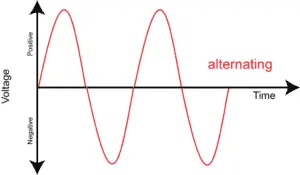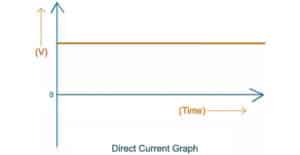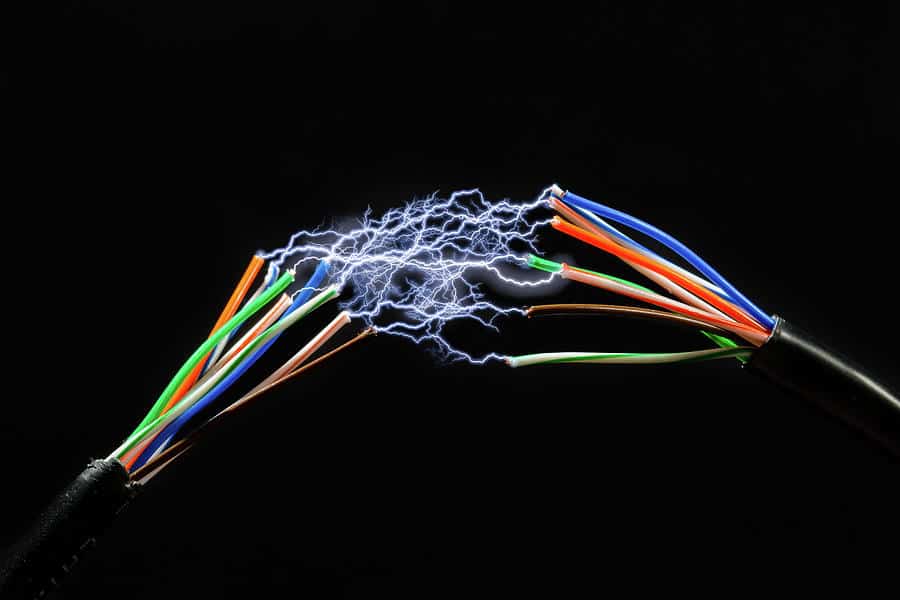An electric current is nothing but a flow or movement of electric charge (electrons) within an electric conductor or a circuit. Based on its movement, an electric current or simply electricity can be further bifurcated into two halves. These two halves are the alternating current (AC) and direct current (DC).
Not to mention, one of the primary differences between ac and dc current is due to the movement of charged particles. That, in the case of ac current, an electric charge can only flow in the forward and reverse direction. On the other hand, in a dc current, an electric current can only flow in one direction.
In other words, in alternating current, an electric charge keeps switching its direction periodically. While, in a direct current, an electric charge is unidirectional.
Difference Between AC and DC
| Alternating Current | Direct Current | |
| 1. | An alternating current reverses its direction periodically, hence bidirectional. | A direct current does not reverse its direction, hence unidirectional. |
| 2. | Due to the application of the rotating magnetic field, an alternating current changes its direction. | Due to the application of the steady magnetic field, a direct current flows in one direction only. |
| 3. | The frequency of AC is normally between 50 to 60 Hz. | On the other hand, the frequency of DC is always Zero. |
| 4. | The magnitude of the alternating current varies with time. | The magnitude of the direct current remains constant. |
| 5. | The power factor of alternating current is between 0 to 1. | On the other hand, the power factor of the direct current is always 1. |
| 6. | Graphically, it is represented by Sine Wave, Triangular Wave, Square Wave, and Square Tooth Wave. | Graphically, it is represented by a straight line. |
| 7. | It can be easily transmitted over a long distance with negligible losses. | Too many losses will occur if transmitted over a long distance. |
| 8. | The sources of alternating current include alternators, mains, etc. | The sources of direct current include batteries, solar cells, etc. |
| 9. | Applications of AC include electric water heaters, microwaves, etc. | Applications of DC include cell phones, laptops, etc. |
What is Alternating Current?
A type of current in which the flow of charge changes its direction is known as an alternating current. Just because the AC current is produced using rotating magnets, it fluctuates periodically. That’s why an electric charge can move in the both forward and backward directions.

Additionally, the magnitude of the alternating current varies with time. Hence, the power factor of AC is always between 0 to 1. Since this type of current can move in both forward and backward directions. Therefore, it can be graphically represented by a Sine Wave, Triangular Wave, Square Wave, and Square Tooth Wave. Moreover, the frequency of AC is normally between 50 to 60 Hz.
Must read, Zener Diode Introduction – a Brief Review
Transmission of Alternating Current
Not to mention, one of the main reasons that the world prefers alternating current over direct current is that the former can be easily transmitted over a long distance with negligible losses. A device that helps in the efficient transmission of power is known as a transformer.
A transformer is a device that is basically used to step up and down the electric voltage. In layman, at the time of transmission, power companies convert alternating current to a very high voltage, then drop it down to a lower voltage for distribution.
Check out, Volt vs Ampere – Difference and Comparision
Advantages of Alternating Current
Some of the advantages of Alternating current are:
- The energy loss during transmission is negligible.
- Not to mention, an alternating current is easy to generate.
- It is quite cheaper as compared to direct current.
- High efficiency, etc.
Disadvantages of Alternating Current
Some of the disadvantages of alternating current are:
- Alternating current is more dangerous as compared to a direct current.
- Better insulation is required due to skin effects.
- It can not be stored.
Must Read: What are Conductors? – Definition, Types, Facts & Examples
What is Direct Current?
A type of current in which the flow of charge does not change its direction is known as the direct current. Just because the DC current is produced with steady magnets, it can not fluctuate periodically. Therefore, an electric charge can move only in one direction.
 Additionally, the magnitude of the direct current remains constant. Hence, the power factor of DC is always equal to 1. Since this type of current is unidirectional. Therefore, it is graphically represented by a straight line. Moreover, the frequency of DC is always zero.
Additionally, the magnitude of the direct current remains constant. Hence, the power factor of DC is always equal to 1. Since this type of current is unidirectional. Therefore, it is graphically represented by a straight line. Moreover, the frequency of DC is always zero.
Must read, A Brief Introduction To Laser Diode
Transmission of Direct Current
Again, one of the main reasons that the world prefers alternating current over direct current is that the latter loses too much energy when transmitted over a long distance.
However, with the development of the HVDC (High Voltage Direct Current) transmission system, the energy losses that occurred during transmission were minimized to too much extent. Yet, it is not too favorable due to the high setup cost.
Check out, Superconductors Definition, Types, & Applications
Advantages of Direct Current
Some of the advantages of direct current are:
- Direct current is less dangerous as compared to alternating current.
- It can be easily stored, etc.
Disadvantages of Direct Current
Some of the disadvantages of direct current are:
- It can not be transmitted over a long distance.
- Too much energy loss.
- It is costly as compared to alternating current.
- Less efficiency, etc.
Must Read: Difference Between Ammeter and Voltmeter in Tabular Form
Frequently Asked Questions
1. What are the sources of alternating current?
Ans. The sources of alternating current include alternators, hydropower plants, thermal power plants, mains, etc.
2. How to convert ac to dc current?
Ans. Alternating current can be converted into direct current using a rectifier. A rectifier is an electrical device made of one or more than one diode that converts ac supply into dc supply.
3. What are the sources of direct current?
Ans. The sources of direct current include batteries, thermocouples, solar cells, etc.
4. How to convert dc to ac current?
Ans. Direct current can be converted into alternating current using an inverter. An inverter is an electronic device that is primarily used to convert dc into ac supply.
That’s it for this post. If you like this article, share it if you like, like it if you share it. You can also find us on Mix, Twitter, Pinterest, and Facebook.
You might also like:
- Difference Between Scalar and Vector (Tabular Form)
- Fission vs Fusion – Difference in Tabular Form
- Dot Product vs Cross Product (Tabular Form)
- Difference Between Renewable and Nonrenewable Energy Resources (Tabular Form)
- Difference Between Conductors and Insulators (Tabular Form)
- Difference Between Kinetic and Potential Energy in Tabular Form
- Difference Between Ammeter and Galvanometer in Tabular Form
